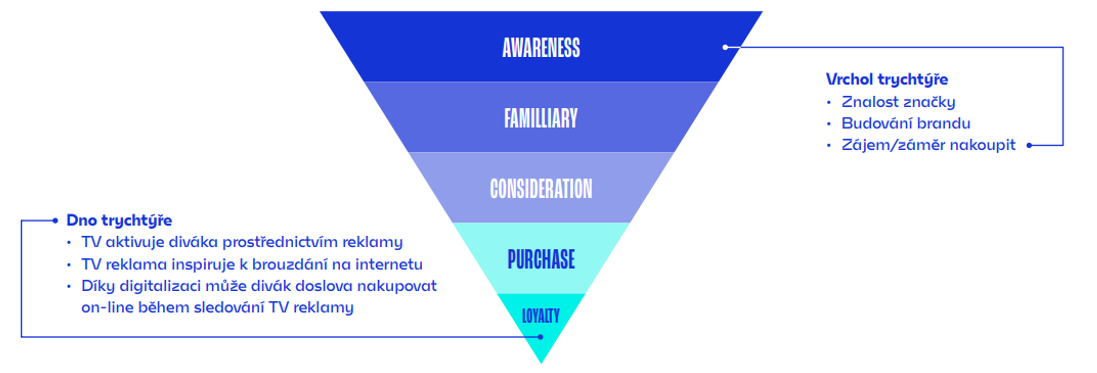TV ADVERTISERS MUST STOP IGNORING MID-FUNNEL MEASUREMENT: IT’S WHERE THE ACTION IS
25. 2. 2021When the digital world collided with television, a game-changing opportunity emerged: the ability to measure actual consumer behavior in response to TV ads, in real-time. Nearly all TV viewers have a second screen in-hand while they watch, according to the Nielsen’s Total Audience Report.
And when the 21st century viewer sees something that interests them, they search for more information. The ability to see this search engagement within minutes of an ad airing enables marketers to connect the top and bottom of their marketing funnel, to literally see their customers’ journey in action. Through behavioral data like search, television can be as responsive and accountable as digital marketing, which is great news for TV advertisers and those who may have dismissed it in the past.
Traditional TV measurement pitfalls
Advertisers weren’t neglecting the middle of the funnel. They’ve always tried to use TV to build desire and demand, prompting the mid-funnel evaluation and consideration phases of the customer journey. They just didn’t have the ability to measure it in the past. It’s time to examine the pitfalls of relying solely on traditional top and bottom funnel measurement methods, such as attitudinal surveys and close-loop attribution, respectively.
Advertisers traditionally assume that surveys accurately assess consideration or intent. They don’t. People are notoriously bad at predicting their own future behavior (how about those election polls?), and surveys generalize a small sample of these poor predictions to the significantly larger TV audience, making the results even less actionable.
Conversely, advertisers who are laser-focused on bottom-of-funnel attribution – intent on trying to glean actionable information by looking backwards from a sale – miss out on enormous opportunities to engage consumers and improve the conversion rate while campaigns are still in-flight. Trying to match ad exposure to transaction data, with all the difficulties and costs of collecting and overcoming the privacy constraints of those data sets, leaves huge coverage gaps in the analytical conclusions. And by the time there’s any output, it’s too late – the campaign is over.
To focus on just the top or the bottom of the funnel means sacrificing the volume of results that can be achieved – and measured – in the mid-funnel with TV advertising.
The Scale Advantages of Mid-Funnel Data
Today’s customer journey is a more complex path and gathering more data throughout the journey is imperative to reaching accurate and actionable conclusions on how a campaign is performing.
When we study drop-off rates through the funnel, the volume of search data and site visitation data mid-funnel are orders of magnitude greater than the transaction data at the bottom. Each stage in the funnel is predictive of the next. But more data leads to better match rates and coverage and stronger statistical confidence and stability.
What makes this mid-funnel data transformational for TV ad measurement is its ubiquity across people, sectors and mediums. Given that about 90% of consumers use search throughout their path to purchase, according to pre-COVID research from GroupM and Forrester, it’s really the only unifying measure and the simplest and fastest way to see what’s happening through the funnel. As a result, real-time search-driven insights can be used to optimize in-flight campaigns for better engagement.
So, while middle funnel measurement does not reveal attitudinal information or provide a closed loop view of sales, it more than compensates for what those lack.
Looking ahead
The convergence of TV and digital technologies has created a near perfect scenario for advertisers: they can now maximize the critical evaluation and consideration phase of the customer journey using TV advertising because it can be measured reliably through search data.
In our fragmented, always-connected lives, the easiest prediction for the future is that search will remain marketing’s most powerful metric. Those who embrace the real-time, always optimizing mentality empowered by search measurement will win.
Source: Adexchanger.com



